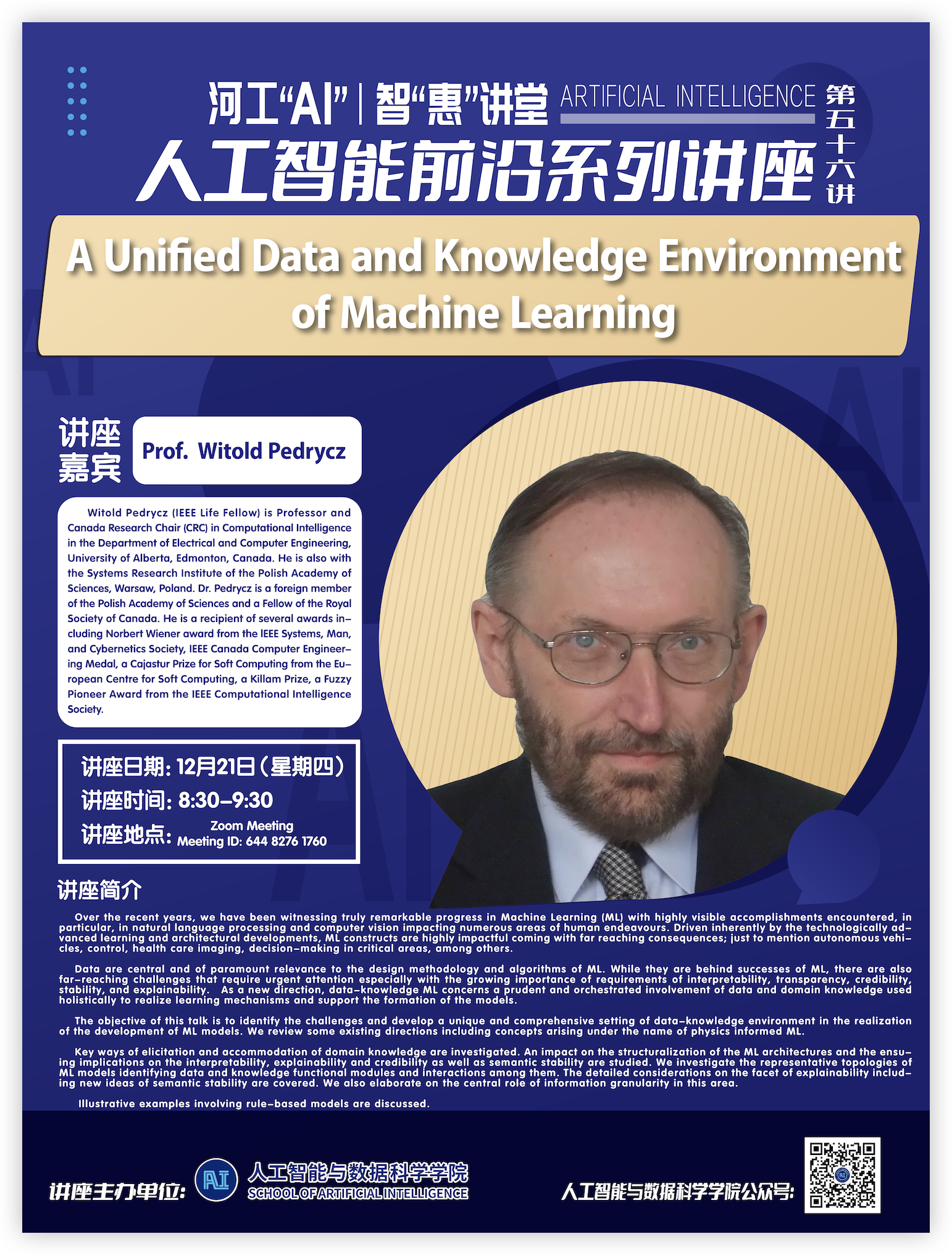
讲座时间:2023年12月21日(星期四)8:30-9:30
讲座地点:Zoom Meeting ID: 644 8276 1760
讲座题目:A Unified Data and Knowledge Environment of Machine Learning
讲座嘉宾:Prof. Witold Pedrycz

Over the recent years, we have been witnessing truly remarkable progress in Machine Learning (ML) with highly visible accomplishments encountered, in particular, in natural language processing and computer vision impacting numerous areas of human endeavours. Driven inherently by the technologically advanced learning and architectural developments, ML constructs are highly impactful coming with far reaching consequences; just to mention autonomous vehicles, control, health care imaging, decision-making in critical areas, among others.
Data are central and of paramount relevance to the design methodology and algorithms of ML. While they are behind successes of ML, there are also far-reaching challenges that require urgent attention especially with the growing importance of requirements of interpretability, transparency, credibility, stability, and explainability. As a new direction, data-knowledge ML concerns a prudent and orchestrated involvement of data and domain knowledge used holistically to realize learning mechanisms and support the formation of the models.
The objective of this talk is to identify the challenges and develop a unique and comprehensive setting of data-knowledge environment in the realization of the development of ML models. We review some existing directions including concepts arising under the name of physics informed ML.
Key ways of elicitation and accommodation of domain knowledge are investigated. An impact on the structuralization of the ML architectures and the ensuing implications on the interpretability, explainability and credibility as well as semantic stability are studied. We investigate the representative topologies of ML models identifying data and knowledge functional modules and interactions among them. The detailed considerations on the facet of explainability including new ideas of semantic stability are covered. We also elaborate on the central role of information granularity in this area.